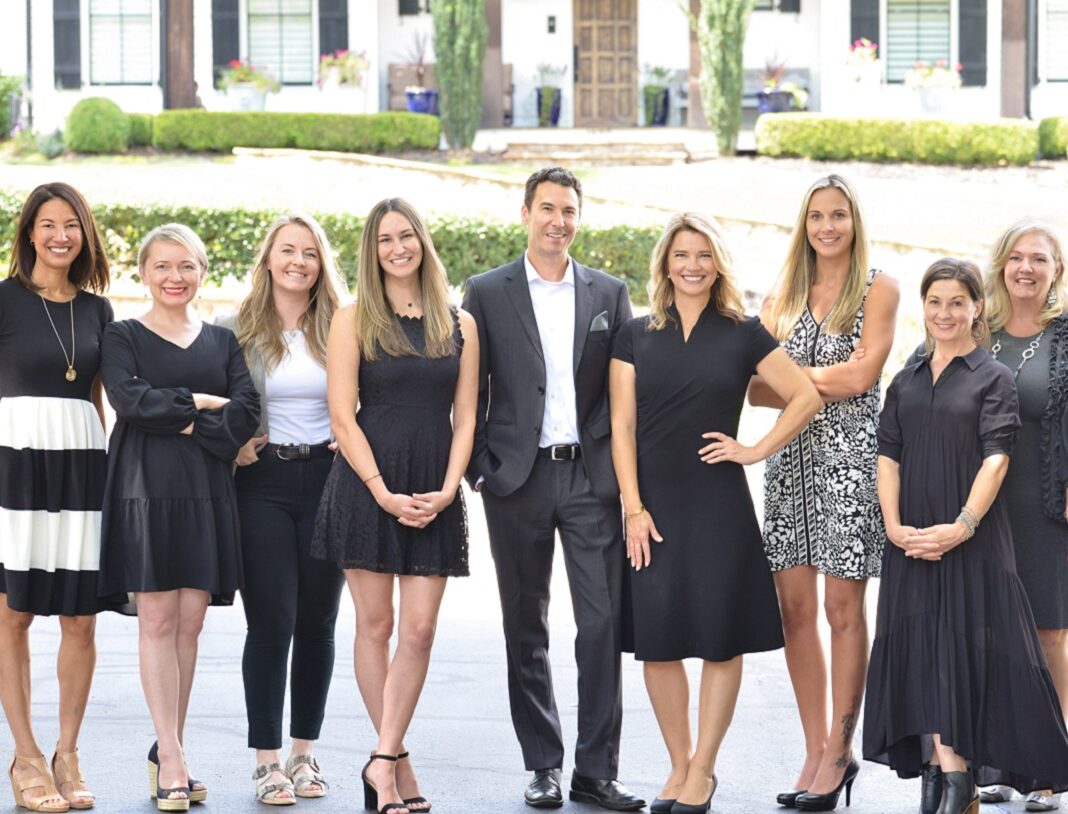Tom and Joanne Curtin Discuss the History of the Curtin Team
Tom and Joanne Curtin discuss the history of the Curtin Team and how the lessons they learned have propelled them forward to build a successful real estate business in Roswell, Georgia. They discuss their success in real estate investments and outline steps they took to get there. They talk about how they committed fully to the decision to invest in real estate and emphasize taking action instead of waiting for the “perfect” opportunity.
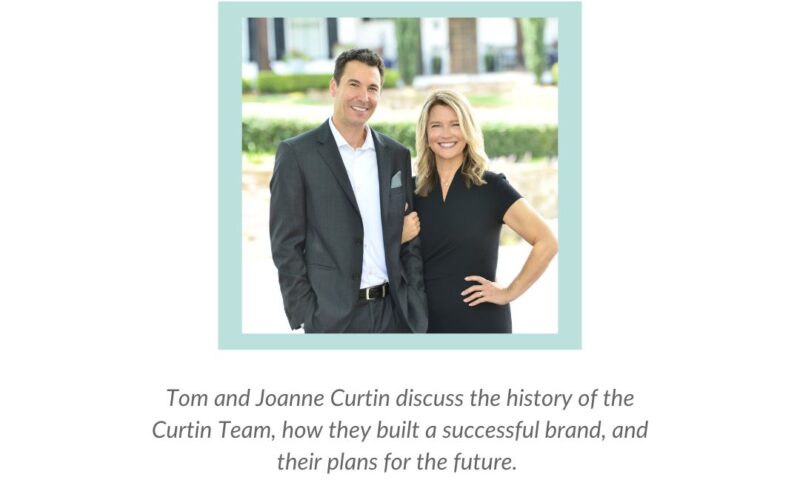
The Dangers of Pricing Your Home Too High
Selling a home is a big decision, and one of the most important aspects of the process is determining the right price. Unfortunately, some sellers make the mistake of pricing their homes too high, which can lead to a host of problems down the line. In this blog post, we’ll explore some of the reasons why people price their homes too high when they sell them, and the potential consequences of doing so.
1. Testing the Market
One of the most common reasons why people price their homes too high is because they want to “test the market.” In other words, they want to see if there are any buyers out there who are willing to pay more than what they think their home is worth. While this may seem like a logical strategy, it can backfire in a big way. Overpricing your home can make it less appealing to buyers who are looking in your price range, and it can also turn off potential buyers who might be willing to pay more for a home that is priced appropriately. For example, a home that is worth $600K and the list price was $600K, it would be more likely to get that amount. However, if you listed a home that was only worth $575K for $600K, price reductions might eventually lead to a sale price of only $540K.
2. Leaving Room for Negotiations
Another reason why people may overprice their homes is that they want to leave room for negotiations. They may assume that buyers will try to negotiate the price down, so they start with a higher price in order to end up at the price they really want. However, this strategy can also be counterproductive. If your home is significantly overpriced, buyers may not even bother making an offer, or they may assume that you’re not serious about selling.
3. Believing a Higher List Price Will Result in a Higher Sale Price
Some sellers mistakenly believe that if they list their home at a higher price, they will end up selling it for more money. However, this is not necessarily the case. Buyers are savvy, and they will typically do their research to determine what a home is really worth. If your home is priced much higher than other similar homes in the area, buyers may simply choose to look elsewhere.
4. Misinformed About the Market
Finally, some sellers may overprice their homes because they are misinformed about the market. They may have received bad advice from a friend, neighbor, or another realtor who is not familiar with the local market conditions. It’s important to work with a realtor who has experience selling homes in your area and who can provide you with accurate information about pricing and market trends.
So, what are the consequences of overpricing your home? The most obvious consequence is that your home may sit on the market for longer than it should. This can lead to a variety of problems, including:
• Reduced interest from buyers
• Fewer showings
• Lowball offers
• A lower eventual sales price
In addition, if your home sits on the market for too long, it can start to develop a stigma. Buyers may assume that there is something wrong with the home, or they may wonder why it hasn’t sold yet. This can make it even more difficult to sell the home in the future.
In conclusion, pricing your home appropriately is crucial if you want to sell it quickly and for a fair price. While it may be tempting to overprice your home for any of the reasons mentioned above, it’s important to resist the urge and work with a realtor who can provide you with accurate information about pricing and market conditions. By doing so, you can avoid the pitfalls of overpricing and increase your chances of a successful sale.

“Behind the Curtin” Presents Downsizing to a Townhome in Roswell, GA Episode 4
“Behind the Curtin” provides an inside look at local homeowners’ beautifully-crafted houses, giving insight into what it takes to renovate, upgrade, and style the most coveted parts of their dream homes. In this video series, industry expert and business owner Joanne Curtin explores local homes while interviewing their owners who live well in their homes to better understand their thought processes when making important decisions. Join Joanne to get a look into the world of luxurious real estate one wonderful home at a time.
“Behind the Curtin” Episode 4 – Downsizing to a Townhome in Roswell, Georgia
WATCH THE FULL EPISODE HERE
Lucy Hintz lives in Roswell, Georgia. She recently downsized to a townhome near Canton Street. She divides her time between her home in Roswell and her second home in the Bahamas.
Joanne: Where did you live before moving to Roswell? What made you choose a new townhome?
Lucy: I have lived in Roswell, in a single-family home. But I had always wanted to live in a walking, shopping, dining community. I’ve always wanted to live near downtown Roswell. Another thing is, my husband had cancer, so we knew that it was time for us to get out of the responsibility of the really big house. We were also looking for a turn key we could have without overwhelming issues.
Joanne: What specifically about this property did you like?
Lucy: When we moved in to this unit, our basement was not finished so we had an opportunity to create what we wanted. We have another full bedroom and bathroom down there. I have grandkids, so when they come there is lots of space. I also have a fabulous deck so the outdoor space is awesome too.
Joanne: What did you do to improve your property?
Lucy: We’ve done a lot of things. We changed the wood floors on the main level, which is a beautiful upgrade. My kitchen was solid white, and I’ve taken the island and painted it to a dramatic blue. We finished the basement in full and built a patio outside with stones and made it home. We also put in bookshelves on both sides of the fireplace with separate beer and wine coolers. And we added a built-in bar with quartz countertop.
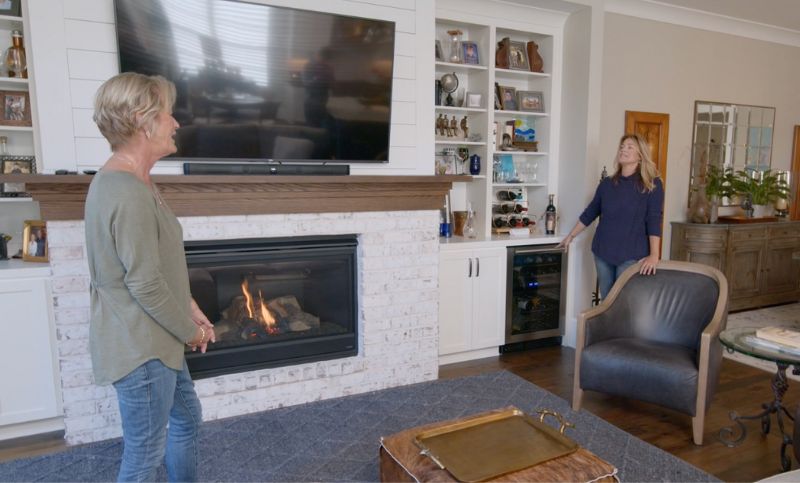
Joanne: Did you work with a designer?
Lucy: No, this is all us. We had a lot of people that worked for us at our former home. And I purchased the art at local interior design stores.
Joanne: What is your favorite room in the house?
Lucy: It would be the deck. We open up the French doors on the main level, where we can have a breeze and enjoy bringing the outdoors in.
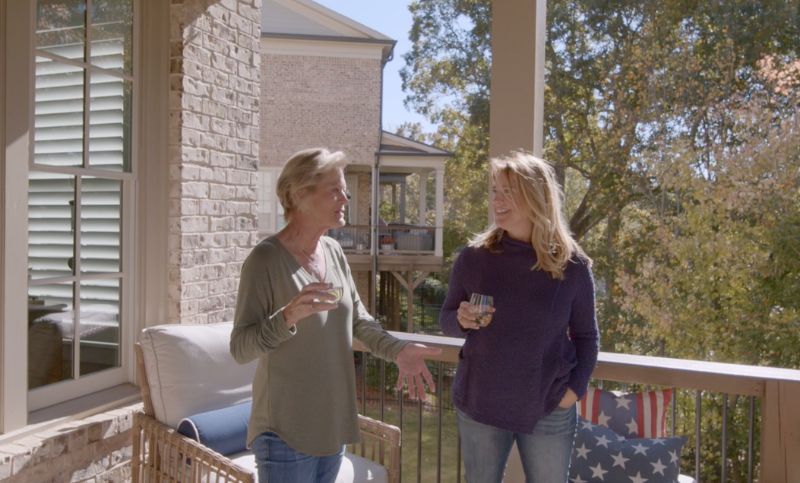
Joanne: What were some of your favorite places to buy home furnishings?
Lucy: We got rid of everything from the old house. All the furniture came from Arhaus. For the art, I went everywhere from Kudzu to 13 Hub. I used Carpet Depot for flooring.
Joanne: What’s one splurge in your home you could not live without?
Lucy: I splurged on this whole house. My bed and the bedding came from Arhaus and it was a big splurge. Arhaus had a wonderful sales representative. And I don’t know if a lot of people are like me, but I stick with people who are helpful and good at what they do.
Joanne: What have you learned from this process of moving from a big house?
Lucy: It’s not as difficult to let go of things as we think it is. And to use an estate sale group was key. And I’m not just tooting the horn for you, but finding a realtor that really understood what we were trying to do was so important. Previously we had trouble selling our home. Your team are the ones who really transformed it. It was a matter of 30 days and we had an offer on that house.
Living in a neighborhood means we all just look after each other. I think when you’re looking for a different place in life, it’s important that you are in a community that’s similar, that has a lot of the same interests that you.
Joanne: Is there anything you would do different that someone else could learn from?
Lucy: I guess I would say, I think it would have been better to finish the basement prior to moving in.
Joanne: Is there any advice on what you think should not be skimped on?
Lucy: I just think once you find your home, make it your home. Don’t wait because whatever you put off is something you’ll never get around to, something else will take priority.
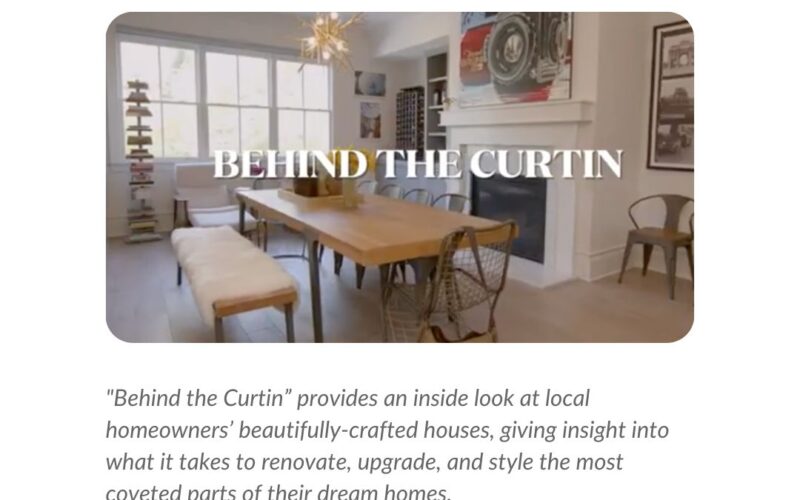
The Most Popular and Favorite Features In New Home Building
New home construction has come a long way in recent years with a focus on space design, energy efficiency, and environmentally-friendly materials. Here are the latest features in new home construction:
Large Mud Rooms (aka Family Foyers) – Large mud rooms have extended their footprint in new homes. Previously, mud rooms were often limited to just a hallway with a built-in, but now they are taking on a larger role by accommodating seating, sometimes with a desk to pay bills, and drop zone for mail. Think about it as a room to hide all the mess when you or your children walk in the door – there’s a place to drop shoes, coats, backpacks, laptops, papers, mail and even to take a minute to sit and relax before entering the main house. All of this is usually hidden behind a sliding door to create separation and the ability to close off this area from guests seeing the mess.

Heated floors – Heated floors are especially popular in the primary bathroom. Making cold tile warm in the winter is a game changer! Heated floors operate on a timed thermostat so you can program the heat to match your schedule. Waking up and the bathroom is already toasted, no longer cringing when your bare feet hit the cold floor and scrambling to get your slippers on. Once you have them, you’ll never want to be without them.
A Hidden Room – Childhood dreams come true! Having a hidden room to relax and unwind or to safely retreat into if needed, these rooms are being added behind bookshelves just like in the movies! Often found in an office, a walk-in closet, or primary bedroom, hidden rooms can serve a variety of purposes like hiding a prized and valuable collection, a hidden entertainment area, or a reading and relaxing spot. Another example is the understairs space that often goes unused, which can be turned into a hidden fun playroom for kids. We’ve even seen a hidden hatch door in the floor that led to a wine room underground. The possibilities are endless.
Environmentally Friendly – Environmentally-friendly building has become a favorite for energy efficiency, with an attainable and clear ROI and because of increased environmental awareness. Homeowners want to be a better steward of the planet, and this not only saves homeowners money on energy bills, but it also helps to reduce the overall carbon footprint of the home. There are many ways builders are incorporating this into their plans, such as:
● Solar: Your builder can prepare the roof when built for solar panels. Installing mounts and preparing for wiring during construction will save you money for when you do install solar panels in the future.
● EV Ready: Your builder can ensure that your home has enough electrical service in your garage and install chargers during construction.
● Battery Ready: Equipping your home with solar batteries allows you to capture the energy produced with solar (instead of or in addition to sending it back to the grid) and then use it as you need it, either during a power outage or on cloudy days when solar may not be sufficient.
● Geothermal Systems: According to the US Department of Energy, a Geothermal heat pump can mean a 25%-50% reduction in energy consumed compared to a traditional system that uses air. In addition to the electricity savings, geothermal systems are eco-friendly because they don’t burn gas during operation. And because there’s no combustion, there’s no admission of carbon dioxide, carbon monoxide or other greenhouse gasses. Because these systems are much quieter to operate, it also saves on noise pollution. If the builder is already digging for a septic for your home, ask about the possibility of adding geothermal during the dig.
There has been a significant shift towards the use of environmentally-friendly building materials. This includes the use of recycled materials, low-VOC (volatile organic compound) paints and finishes. Eco-friendly building materials cut down on greenhouse gas emissions, and conserve natural resources; all while improving water and air quality. Examples are Low-Formaldehyde Insulation, Low-VOC Drywall Adhesives, Low-VOC Paints and Carpets, ENERGY STAR® Low-E Windows, low-flow plumbing fixtures, dual flush toilets and LED lighting packages.
Hidden Outlets – These can be an afterthought, but with planning ahead and smart design, your outlets don’t have to take away from your beautiful kitchen backsplash. Electrical outlets can be placed under the cabinets so they remain hidden from view and still easy to access. There are also countertop pop-up outlets that only appear when needed or removable tile plates that can keep the outlet masked when not in use. With the amount of device charging we need now, consider a charging station drawer. This drawer will have a power strip at the back of it and you can keep unsightly wires and devices out of view while charging. Perfect in the kitchen, bathroom and built-in desk drawers.
Large Kitchen Island – Kitchens are the heart and center of the home. Large kitchen islands serve a multitude of roles, from prep station to homework spot to eating area. Large kitchen islands have an aesthetic impact on the room as well. Popular design trends include the waterfall edge where the countertop continues down the side of the island all the way to the floor or the simpler English cottage style with tongue and groove paneling. Large dramatic hanging light pendants and gorgeous sink hardware help showcase the island as a centerpiece of the kitchen.
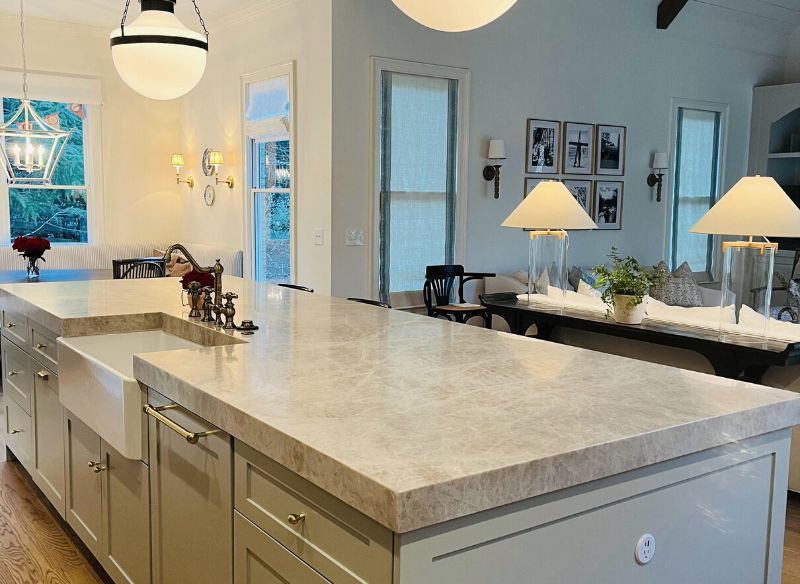
Floating vanities – Floating vanities add a contemporary feel and modern look. These shorter base cabinets appear to “float” on the wall instead of sitting directly on the floor. They can make small spaces look larger and open up the room. The downside is less storage space. To add to the floating visual, under-cabinet lighting is a popular added feature, this lighting below the floating cabinetry also adds to the “floating” appearance of the vanity.
Dog Wash Station – Dog owners are spending more and more on their dogs every year. A recent survey cited that one of the main reasons Millennials purchased a home was because of their dogs. So, it’s no surprise that new features specifically for dogs are becoming standard. We’re even seeing dog watering stations with a faucet to refill the water bowl.
Locating a dog bath in a mud room, laundry room ,or garage is a practical solution, especially if your space has exterior access. Putting everything you need right by an exterior entrance; your home will remain better protected from tracked-in dirt. Ideally your wash station has a faucet with a handheld sprayer attachment and drain area. Plus, it’s more versatile than you might think. You can use it not only for your furry friends, it’s also great for washing off muddy kids or dirty shoes.
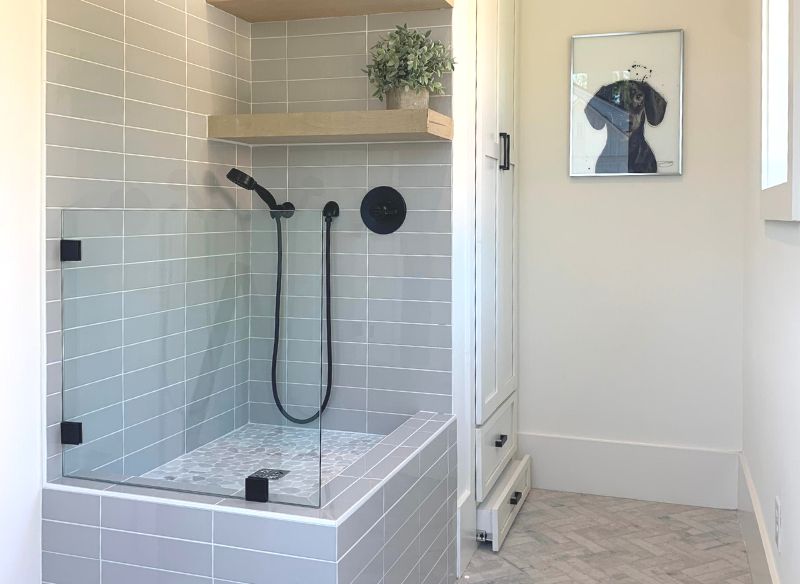
Built-In Speakers Inside & Out – Bring on the tunes! If you already know where you want to put the sound system and entertainment center, talk to your builder about installing built-in speakers in those rooms. You’ll save yourself valuable floor or wall space and have the luxury of having your house literally filled with music.
Whether you’re building a new home or remodeling an existing one, these trends are worth considering to stay ahead of the curve and to optimize your space in a modern, fashionable way.
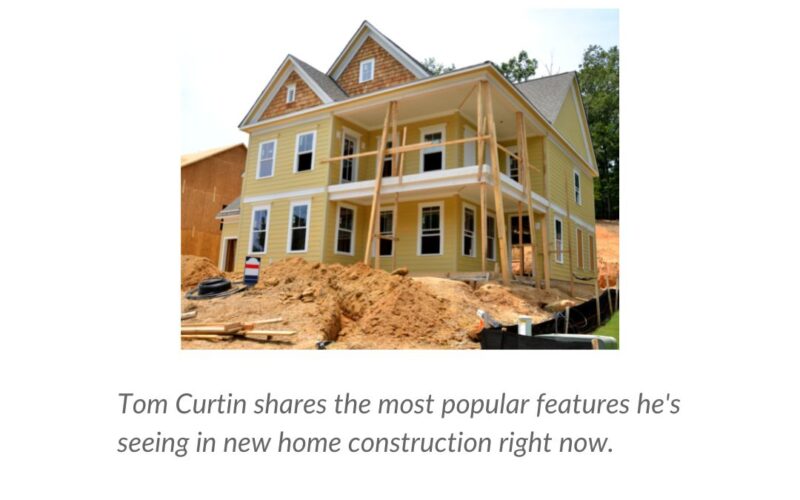
What You Need to Know About Vacation Property Investments in Blue Ridge, GA
What You Need to Know About Vacation Property Investments in Blue Ridge, GA
Have you ever considered purchasing a vacation rental or short-term rental (Airbnb/VRBO) property? You’ve probably heard many others talk about this. If you’re like me, what you’ve heard about these properties sounds too good to be true, but you may have also heard others having terrible experiences with these investments. Short term rental opportunities are starting to diminish, yet if you’re going to enjoy your purchase in addition to renting it, it’s a lifestyle investment. While interest rates have increased and made payments higher, will it be worth more if you intend to hold for 7-10 years?
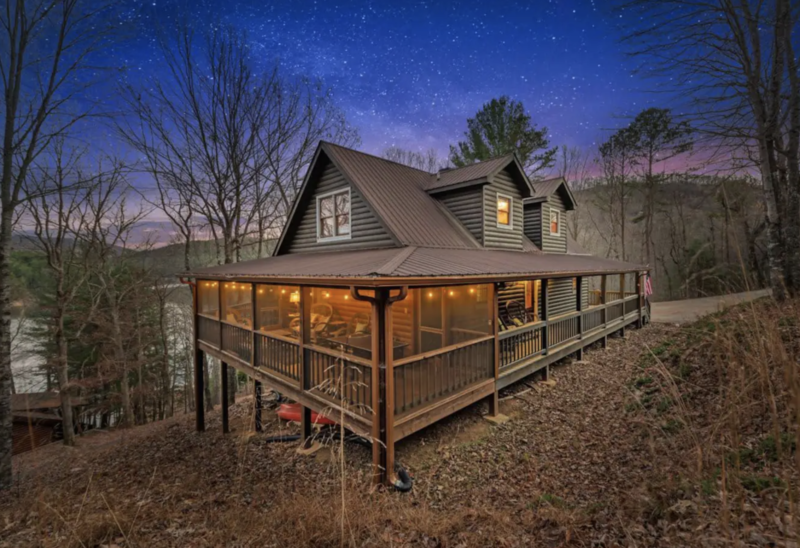
We have researched many areas and discovered that Blue Ridge, Georgia offers the most benefits for short term rental investment for buyers in the Atlanta area. Here are my top six reasons for why this could be.
1. Blue Ridge has year-round rental appeal. There are activities to enjoy in every season. Summer: Lake Blue Ridge, world-class whitewater rafting on the Ocoee River, or fly fishing on the Toccoa River are popular attractions. Fall: Foliage brings guests to the area and local festivals draw large crowds. Winter: Light Up Blue Ridge festival, Santa Express on the Blue Ridge Railway. Year-round: Trout Fishing – Fannin County is the Trout Capital of Georgia. There’s also mountain biking year-round with an abundance of trails from easy to difficult. Mercier Orchards is the largest orchard in the south. The orchard draws visitors year-round, peaking during apple picking season. Hiking: There are over 300 miles of trails and 16 beautiful waterfalls in the area.
2. Over the holidays, there’s strong demand for cabins where family and friends can come together for Thanksgiving, Christmas, and other holidays in a group setting. Year-round, there is an abundance of hiking. There are over 300 miles of trails in the area! The panhandle/30A area is popular with Atlanta buyers looking to host; however, it is very seasonal and generally limited to spring break and a few months during the summer. It can be extremely difficult to ever turn a profit.
3. Taxes: Fannin County property taxes are much lower than taxes in other counties and especially less than in the state of Florida.
4. Downtown Blue Ridge: The town is a draw for many reasons. The Historic Blue Ridge Railroad, dining, shopping, and nightlife all draw crowds. There’s an artsy vibe with many galleries. The Blue Ridge Railroad offers seasonal trips as well, such as the Firecracker Special and Santa Express. The appeal of downtown Blue Ridge is broad reaching and not reliant on one attraction. This ensures you have guests interested in visiting at all times.
5. Wineries: There are very nice wineries in the area. There are also winery tours (and craft brew tours, too). From a short-term rental benefit perspective, this brings in groups of friends coming for a fun weekend to tour the wineries, who generally will rent a cabin together.
6. Blue Ridge supports tourism. Some local governments look to control or even eliminate short term rentals by adding restrictions or large fees. The Blue Ridge economy is driven by tourism and the local government supports it. Currently, Blue Ridge requires you to obtain a Short Term Rental Certificate. The cost is minimal at $25 per year.
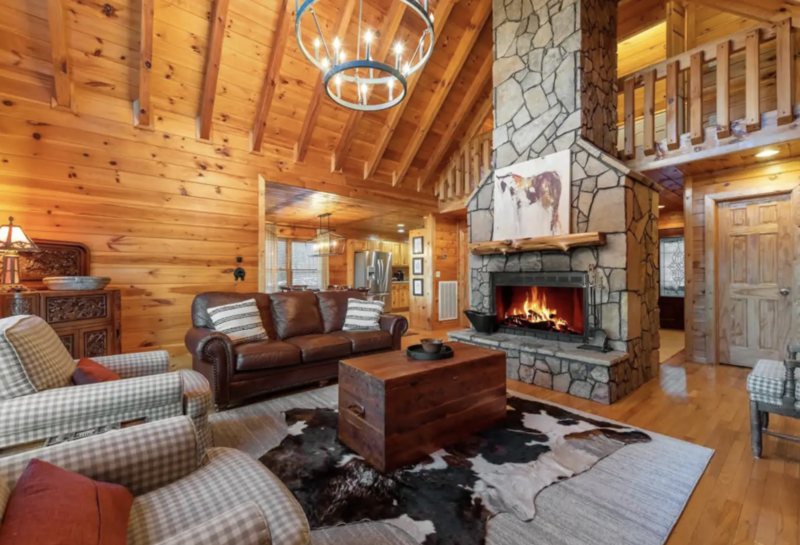
I have personally invested in both beach and mountain vacation properties, and Blue Ridge has been the best for us. Winter, Spring, Summer or Fall — the Blue Ridge Mountains are beautiful. We wanted to confidently help our clients invest in Blue Ridge as well. To do so, we have partnered with Tracy Krohn. Tracy has a wealth of local knowledge, having grown up here and worked in the area extensively. Tracy personally owns a vacation rental in Blue Ridge and she can help you understand recent rental income trends and operating expenses so you can make an informed investment decision. If you want to explore the area and learn more, connect with us and we’ll connect you with Tracy to get started!
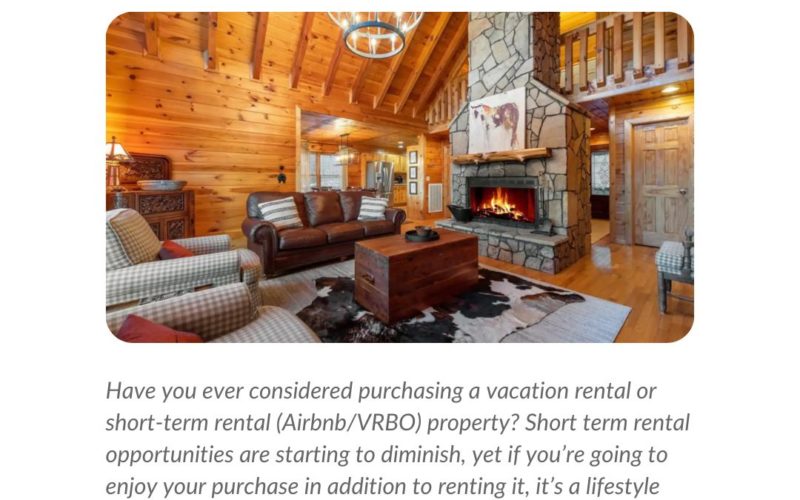
“Behind the Curtin” Presents a Pool and Pool House in Milton, GA Episode 2
“Behind the Curtin” provides an inside look at local homeowners’ beautifully-crafted houses, giving insight into what it takes to renovate, upgrade, and style the most coveted parts of their dream homes. In this video series, industry expert and business owner Joanne Curtin explores local homes while interviewing their owners along the way to better understand their thought processes when making important decisions. Join Joanne to get a look into the world of thoughtful real estate one wonderful home at a time.
“Behind the Curtin” Episode 2 – A Pool and Pool House in Milton, Georgia
WATCH THE FULL EPISODE HERE
Tripp and Grace Melton live in Milton, Georgia. They have been residents since 2003. In 2020, they began the work of creating an outdoor space for relaxation and entertaining, with a pool and pool house.
Joanne: Why did you pick this area?
Tripp: We were working downtown at the time and couldn’t find anything we liked. And then we drove through this area and liked the idea of a newer construction.
Grace: Even though the house wasn’t initially what I had in mind, I fell in love with the hidden pantry in the kitchen and the fireplace in our keeping room looks like the wall in the church where we go married.
Joanne: What have you done specifically to increase the value of your home?
Grace: We made a lot of use of the outside space and tried to do some thoughtful landscaping with trees and buffers because the way the house is situated, you can see the whole backyard from the street. But the biggest thing was adding the pool in 2020 and the pool house.
Joanne: Did you use a designer to create the outdoor living resort space that you have?
Tripp: No, these are all our ideas, even the landscaping. We worked with our pool builder for the pool house to execute what we wanted.
Joanne: What do love about the outdoor space you’ve created?
Grace: For me, I love being around water. I like seeing it, I like hearing it. I think it’s calming, but it’s also a great entertaining space. And we use it year ‘round, because we’ll have the pool heated. We can go out here for coffee in the morning or have friends over late at night. We use the fireplace and the electric heaters in the middle of winter, and so we spend a lot of time in the pool house. It’s been fun.

Joanne: Where did you find vendors and contractors for such a big job?
Tripp: We went to our original builder. They gave us some ideas and some referrals. We also did a lot of research online about what we wanted.
Joanne: So, what did you splurge on?
Tripp: The sliding doors on three sides of the pool house was almost a third of the cost of the entire pool house. But the space is transformed when they are opened or closed. The pool house stays cool in the summer and comfortable in the winter. Also, our ceiling fan from Big Ass Fans Company, is large enough to create a nice breeze.

Joanne: What else do you really like about the space?
Grace: The vaulted ceiling. It’s not just a flat ceiling, so I think it’s a nice, added dimension.
Joanne: What have you learned from the process?
Tripp: I’ve learned from this process to get everything in writing. In the end, even when you’re dealing with friends or people you like, it’s still a business transaction.
Joanne: Is there anything you would do differently?
Tripp: We weren’t able to put in a bathroom because of the rules regarding septic fields, unless we wanted to install another septic system. However, we finished the basement with an additional bathroom that allows us to have a changing room for the pool.
And some people have asked why didn’t do an outside kitchen. I mean, we just don’t use our inside kitchen that much. So, it wasn’t a big deal for us.
Joanne: What advice would you give someone who wanted to renovate their outdoor space?
Grace: I would say good design that’s really well thought out. And materials, don’t skimp on materials.
Tripp: I would tell someone don’t skimp on the decking. For example, the travertine around the pool is cooler in the summer than pavers or concrete. I would also not skimp on lighting. We changed our ground lighting to soffit lighting and it changes the whole look. We also installed a cool sound system through a Sonos sound system with speakers shaped like rocks around the pool area.
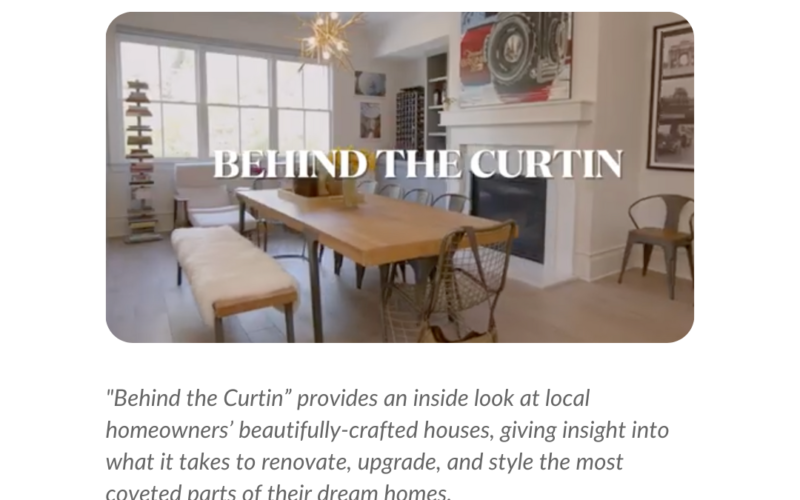
The Real Cost of Waiting
If you’re considering continuing to rent, maybe you think it’s best to wait until prices come down, or maybe you’re waiting for interest rates to come down. Or maybe you just don’t see the value in taking on the responsibility of owning a home. But did you know home ownership is one of the largest factors in building wealth? It is the differentiator between those that bought and those that continue to rent. How big of a difference can it really make, you ask? Let’s look at the tale of two friends, Harry and Randy, and really dive into the numbers to see what a difference buying a home now and continuing to rent will make in a 7-year period.
Harry Homeowner just purchased his new home for $400,000. He used FHA financing and put 3.5% down, or $14,000. His loan would be $392,755 because of the up-front 1.75% mortgage insurance that gets rolled into the loan on FHA loans. His monthly payment would be:
Principal & Interest – $2,613
PMI – $273.42
Estimated Taxes & Insurance – $474
Total payment = $3,360.76
After 7 years, Harry will have paid $181,546.66 in interest and $34,171.22 in principal, leaving a loan balance of $351,829.02. Harry has gained $34,171.22 in principal paydown, which can also be looked at as a forced savings. But wait – it gets better. Harry will also gain equity. The average equity increase annually is 4% (in metro Atlanta, it’s been 5% average.) After 7 years at an average of 4% annual appreciation, Harry’s home is now worth $526,327. That’s a gain of $126,327. Adding in the principal paydown of $34,171, Harry is sitting on a nice $160,498 gain. Harry could access some of this equity through a Home Equity Line of Credit and perhaps purchase an investment property (smart choice Harry!) or decide it’s time to upgrade and roll those gains into a new home and start the process over.
Another scenario that would likely have occurred for Harry is that because of the gain in the property value and equity, the PMI would drop off – most likely Harry would have refinanced his house and the payment would have reduced by $300-$400, so Harry’s payment in year 7 would be estimated to be around $2,900.
Randy Renter is renting a cool two-bedroom apartment in a hip, walkable location for just $2,000/mo. Instead of making a mortgage payment, Randy is a disciplined dude and he is saving the difference in his rent payment and what his friend Harry is making in a mortgage payment. So he’s saving $1,360 per month.
Randy is smart with his money, and he’s invested it in a mutual fund and was able to obtain an average annual return of 12%. Randy would now be sitting on a cool $167,000.
Aha you say: “So buying is not the right move! I’d actually have more money by saving money by renting (assuming you’re as disciplined as Randy) and not buying.”
However, we didn’t factor in that rent continues to increase every year. So in reality, Randy’s fixed cost of living continues to increase, while Harry’s fixed housing cost is locked in (and likely reduced when he refinances). Let’s rerun this scenario factoring the rent increases and consequently the savings decreases for Randy.
Average rents increase by 6% per year in our area. Randy’s two bedroom apartment rent looks like this over 7 years:
Year 1 $2,000
Year 2 $2,120
Year 3 $2,247
Year 4 $2,382
Year 5 $2,525
Year 6 $2,676
Year 7 $2,837
At the end of 7 years, again Randy is super disciplined and did not touch any of his savings, he now has $138,855 saved.
Let’s compare.
Harry has $160,498 in equity/net worth.
Randy has $138,855 in equity/net worth.
Harry has a fixed monthly housing payment.
Randy also has a monthly payment that will continue to rise and is beyond his control.
Randy can buy too, but the same house Harry bought 7 years ago will cost Randy a lot more.
It has been said “the best time to plant a tree was 30 years ago, the second-best time is today.” The same can be said of real estate. Don’t wait to buy real estate, buy real estate and wait!
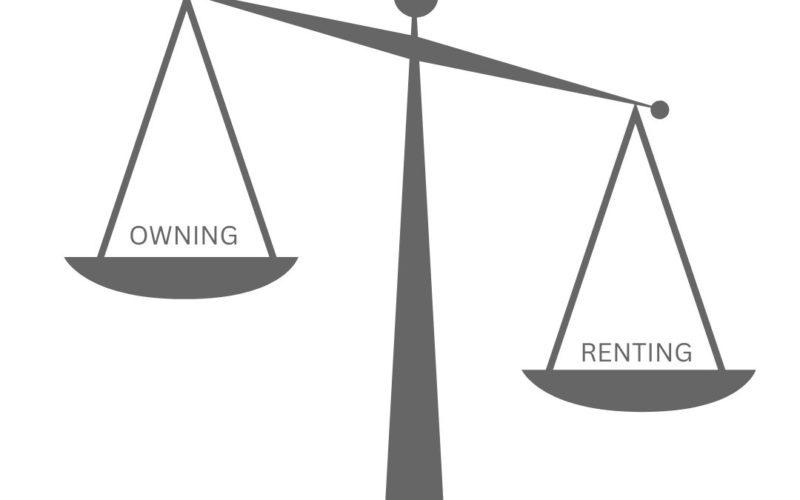
“Behind the Curtin” Presents a Wine Room and Kitchen in Milton Episode 1
“Behind the Curtin” provides an inside look at local homeowners’ beautifully-crafted houses, giving insight into what it takes to renovate, upgrade, and style the most coveted parts of their dream homes. In this video series, industry expert and business owner Joanne Curtin explores local homes while interviewing their owners along the way to better understand their thought processes when making important decisions. Join Joanne to get a look into the world of luxurious real estate one wonderful home at a time.
“Behind the Curtin” Episode 1 – A Wine Room & Kitchen in Milton, Georgia
WATCH THE FULL EPISODE HERE
Katie and Dave Smith live in Milton, Georgia with their two children. Recently, Katie and Dave sold their house in Milton’s Highland Manor that they called home for 14 years to move into a brand-new build in the Sweet Apple neighborhood that they helped design. Prior to moving to Milton in 2008, they lived in Miami, Florida for two years.
Joanne: Why did you pick this area?
Katie: We’re from up north where the seasons change. We didn’t like living somewhere where it was hot all year. My husband Dave’s job, at the time, was such that he could live in Greater Atlanta or South Florida, and we just felt like greater Atlanta was an area that we felt we could relate to more and would be better to raise a family. We didn’t have any kids yet when we moved here and that’s part of why we did.
Joanne: As far as your house that you’re in now, what made you choose your house?
Katie: We were so excited to build and get to start from scratch. We really liked how it’s quiet here, but it’s still close to everything. We’re closer now than we were in Highland Manor to Downtown Crabapple, Downtown Roswell, and GA-400. But we’re tucked back in this quiet little country road type situation. We felt like it was very unique, and when we signed to build this house, they hadn’t even cleared the street yet. We were able to see the other homes and see the big picture of the community with the walking trails and green space built into the development.
Joanne: What do you feel like you did to really improve the value of the house that you built? What do you feel adds value to your house the most?
Katie: We love having the master on Main and it’s kind of in its own little wing. It’s tucked away. I can sleep through noise, and I was never able to do that in the old house. The lot itself, how we’re on a cul-de-sac and it’s at the end of the street. The layout of the house provides nice privacy for the backyard, helping with what we’re trying to achieve with the pool and creating a great little hangout area. The kids have their own space upstairs. They have a lot of space. At their current ages of 10 and 13, they don’t want to be around us all the time. They have their own space which makes them feel like they have independence.
Joanne: Alright, so in this home you did not have a keeping room and in place of that, because you want to use your house wisely, you did a wine room where normally an office or dining room could be. So did you use a designer for that?
Katie: I would say we kind of used a designer overall, that helped us in designing the layout of our home and picking the finishes. She did help us a little bit with the wine room. Dave would tell you that he’s the designer. She worked with another couple a few years ago who did the wine room at a house over on Sibley lane. We had seen these pictures, and knew she had worked on a project like this before. That got it going in Dave’s mind, and then we knew we wanted to have a sitting room like a keeping room. We were going back and forth on whether or not to do the wine wall because it was of course an added expense. Dave, in his mind with the numbers, was like, “Is this too frivolous? Like, can we really do this?” And then, he finally said that if he didn’t do it, he would be mad at himself in a couple of years. It costs more money to do after the fact versus if you do it while you’re building the house, it’s easier.
Joanne: What does that wine room have that you needed?
Katie: It’s a quiet getaway. A quiet space. The wine wall itself is a piece of art. It’s very cozy. We painted it a different color from the color that most of the main living area is painted. We did the wine room and Dave’s office a dark gray that really separates it from the rest of the home. It’s right off the kitchen, but it feels like you’re tucked away and it has a door that goes onto the front porch from one wall. So, you could be sitting in there enjoying a glass of wine or having your morning coffee and then go right outside to the front porch.
Joanne: What was the splurge in your wine room that you said Dave was like, “I don’t know if I want to spend the money. But if I don’t do it, I’ll regret it?”
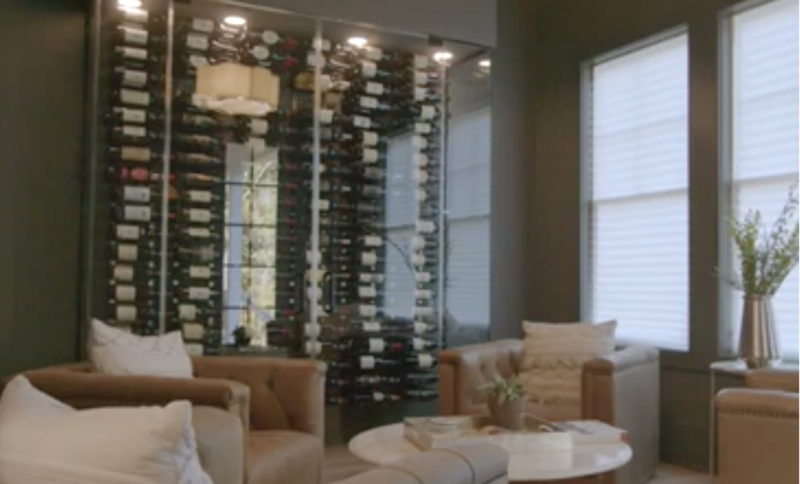
Katie: It’s a built-in refrigerated unit. It has its own thermostat, it has its own separate unit down in the basement. That’s like the ultimate splurge. In our old home, we had a freestanding wine fridge that you purchase. If we ever move, it stays. It’s part of the house. That was definitely a splurge. I mean, gosh, it’s all splurge. A new house is a splurge. Those sliders, the sliding doors, instead of just a door they go into the wall. Not accordion style – they slide like pockets doors into the wall.
Joanne: Would you say that the wine room is your favorite room? What’s your favorite room in your new house? Dave’s?
Katie: Dave would say it’s the wine room. I love the kitchen.
Joanne: Why would you say that?
Katie: It has a lot of storage and it’s bright. I’m looking at my kitchen right now, and I think it just flows easily. We designed it to flow easily.
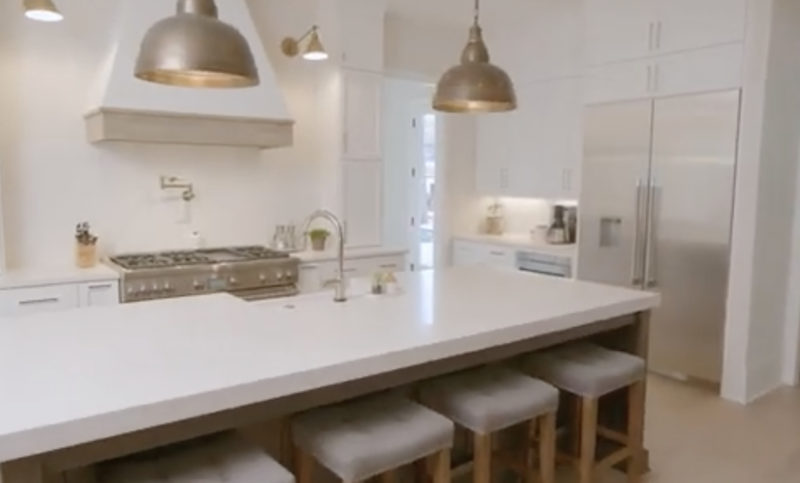
Joanne: Anything that you feel like someone should not skimp on?
Katie: I would not skimp on lighting. At least, in the main areas,
Joanne: Lighting meaning expensive fixtures or just more lights?
Katie: The fixtures themselves. If you put a cheap light over the table in your kitchen or something that you don’t like, it is no good. We got to the point where the lighting budget was getting out of control. We did cans in other areas. We’d rather fix the main fixtures in a year than get something cheap and not like it, you know? What else… Appliances! We didn’t skimp on our fridge. We got the nicer fridge. How many times do you use your fridge a day? A lot, right? So I think that for us, it was like let’s not skimp on things in our main living area. I’m fine skimping on my 10-year-old son’s bathroom tile, or the guest room lighting. Those are rooms that get used a small handful of times a year. But when it came to our main living space, I didn’t want to cheap out and then regret it. We didn’t go crazy, but like we made it nice.
Joanne: So what kind of fridge Do you have?
Katie: Oh, it’s a Thermador fridge. But it’s not so much the brand. It’s just this size. It’s the bigger side by side fridge.
Joanne: Are there any materials that you used that you felt like were not trendy, but just worth it, and were non-negotiables?
Katie: We used quartz for all of our tops, even in the bathrooms, which I’m really happy with. Even in the laundry room – it just makes a difference. One other splurge that I forgot to mention from earlier was in our master bath, we have the doors that come all the way down to the floor without the step with the special drain on the sides. So it’s very clean looking and beautiful. We have the engineered hardwood, the wider planks, which I really love throughout the home. And it’s a lighter-color wood. We had darker wood at the old house, which I thought looked pretty. But on these floors, you can’t see the dirt as much and the paw prints from the dog. So when you have an active family, it’s nice to be able to hide dirt and dog hair better. I’m just keeping it real because I don’t feel like cleaning floors every day!
Katie and Dave’s experience in deciding to move, finding the right location to build, and hand-crafting their forever home is something that countless families do every year. That doesn’t mean it’s not special – building a new home is one of the most special things a family can do together. Their openness and great insight into their thought process during the whole experience helps us learn what to look for and what to avoid when it’s our time to upgrade our own living spaces. These helpful homeowners, along with Joanne, help give you a peek Behind the Curtin into the world of luxury real estate. If this insight interests you, subscribe for more video and interview content at www.youtube.com/@curtinteam.
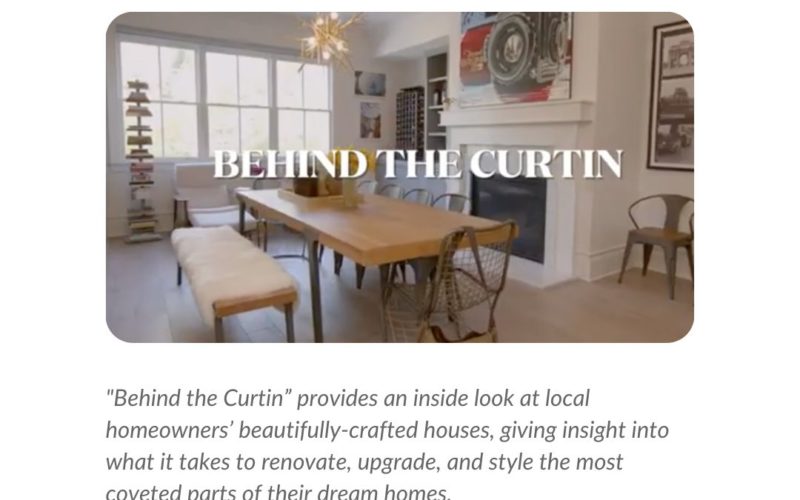
Tom and Christy Discuss First Time Home Buyers
The Curtin Team’s CEO, Tom Curtin and Director of Sales, Christy Smith explain the benefits for first time home buyers in today’s market. One of the biggest advantages of buying a home today is the stability and equity you get. Waiting a year or two can cost you tens of thousands of dollars in equity loss. And as rental rates continue to rise, a fixed rate mortgage payment stays the same. Also, many sellers and lenders are now offering to pay closing costs and buy downs on rates. Large down payments often scare off first time homebuyers, but some loans require as little as 3.5% down. As an example, the down payment on a $400,000 house can be as low as $14,000. And there are many ways to get that down payment including finding places in your budget to cut back and save, loans from family, or loans against a 401K to cover some or all it. The news of interest rate hikes shouldn’t scare off potential home buyers either. If rates go down, refinancing is available and if rates go up, you’ll be glad you locked in a lower rate.

Tom and Christy Explain Mortgage Rate Buy Downs
The Curtin Team’s CEO, Tom Curtin and Director of Sales, Christy Smith explain the benefits of mortgage rate buy downs for buyers and sellers. Like many practices in the world of Real Estate, mortgage hacks depend on Buyer/Seller goals, timelines, and preferences. Buy-downs are unique, though, because they offer direct benefits to both Buyers and Sellers in the short term and long term. They allow houses to be sold more efficiently, less stress with high monthly payments for Buyers, and less interest payment over time. If you are in the market to either buy or sell a home, don’t forget that there are ways for you to save money during the process.


